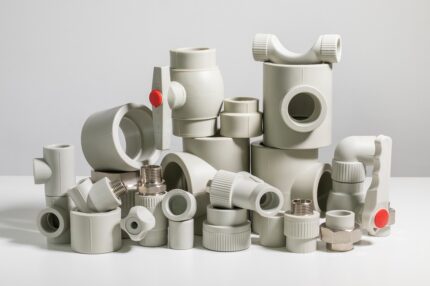Homopolymerization is a polymerization process in which only one type of monomer is used to create a polymer. This method results in the formation of a homopolymer, a polymer consisting of repeating units of a single type of monomer. This process is fundamental in polymer chemistry and materials science, leading to the production of materials with specific and often well-defined properties.
Key Features:
- Single-Monomer Structure:
- Involves the polymerization of one type of monomer to produce a polymer with uniform repeating units.
- Results in a homopolymer with consistent chemical and physical properties throughout.
- Controlled Properties:
- Mechanical Strength: Homopolymers can be engineered to exhibit specific mechanical properties such as strength, toughness, and flexibility, based on the choice of monomer and polymerization conditions.
- Thermal Stability: Properties like melting temperature and thermal resistance are determined by the nature of the monomer and the polymer chain structure.
- Ease of Processing:
- Simple Polymerization: Typically involves straightforward polymerization techniques, including addition polymerization (chain-growth) or condensation polymerization (step-growth).
- Versatility: Allows for the creation of various forms such as fibers, films, and resins, depending on the polymer’s intended use.
- Applications of Homopolymers:
- Packaging: Materials like polyethylene (PE) and polystyrene (PS) are commonly used for packaging due to their durability and processability.
- Consumer Goods: Products such as toys, household items, and disposable cutlery are often made from homopolymers like polypropylene (PP) and polyvinyl chloride (PVC).
- Automotive and Industrial: Components such as bumpers and interior parts are made from homopolymers like polycarbonate (PC) and acrylonitrile butadiene styrene (ABS) for their strength and impact resistance.
- Examples of Homopolymers:
- Polyethylene (PE): Produced from ethylene monomers; used in packaging films, containers, and piping.
- Polystyrene (PS): Made from styrene monomers; used in disposable cutlery, packaging, and insulation.
- Polypropylene (PP): Created from propylene monomers; used in automotive parts, textiles, and food containers.
- Polyvinyl Chloride (PVC): Formed from vinyl chloride monomers; used in pipes, flooring, and electrical insulation.
Applications and Benefits:
- Packaging Materials: PE and PS are widely used for their durability, flexibility, and cost-effectiveness.
- Consumer Products: PP and PVC offer strength, resistance to wear, and versatility for various consumer applications.
- Industrial Uses: PC and ABS provide high impact resistance and durability, making them suitable for automotive and industrial applications.
Homopolymerization is a fundamental process in polymer chemistry, allowing for the creation of materials with specific and predictable properties tailored to various applications. Understanding this process and its outcomes helps in selecting the appropriate materials for diverse industrial, consumer, and scientific needs.









Reviews
There are no reviews yet.